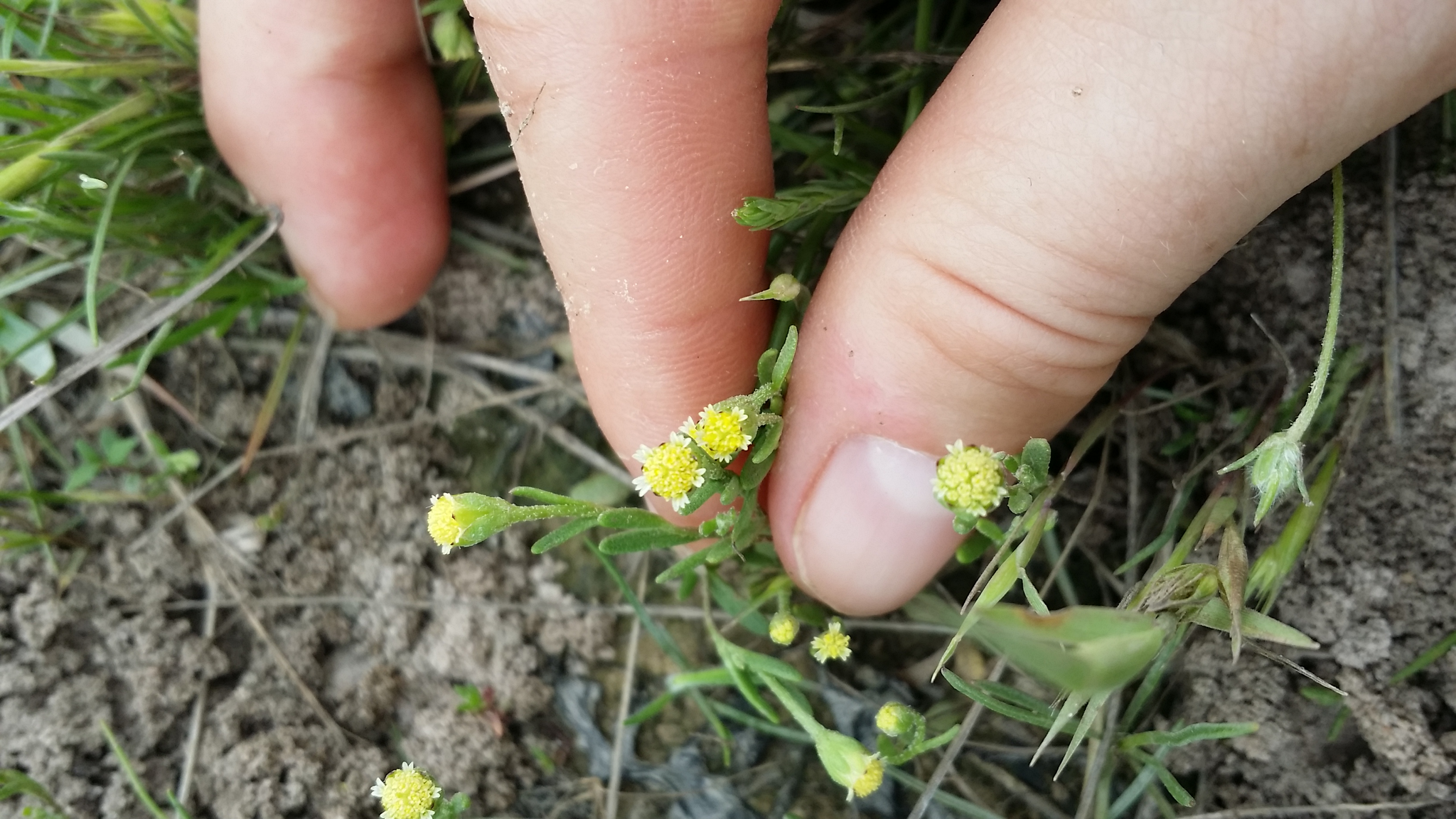Hymenoxys Texana on:
[Wikipedia]
[Google]
[Amazon]
''Hymenoxys texana'' is a rare species of flowering plant in the aster family known by the common names prairie dawn, Texas prairie dawn-flower, and Texas bitterweed. It is
Flora of North America. The ray florets are often tucked behind the phyllaries. The center of the head has 30–75 tiny disc florets.''Hymenoxys texana''.
Center for Plant Conservation. ''Hymenoxys texana'' grows only in the
Determination of endangered status for ''Hymenoxys texana''.
''Federal Register'' March 13, 1986. The soil dries, cracks, and becomes powdery in the dry season.''Hymenoxys texana''.
Texas Parks & Wildlife. Few other plants occur on this substrate, but prairie dogshade (''Limnosciadium pumilum'') can sometimes be associated. ''Hymenoxys texana'' is known only from Harris and Fort Bend Counties in Texas. It was first described in 1891 from a specimen taken near Hockley. Coulter, John Merle & Rose, Joseph Nelson. 1891. Botanical Gazette 16(1): 27–28
/ref> Few specimens were noted after this and by 1979 the species was thought to be
The Nature Conservancy. Most of the occurrences of the plant are within or near the

USDA Plants Profile for ''Hymenoxys texana''
{{Taxonbar, from=Q5956685 texana Endemic flora of Texas Plants described in 1891 Taxa named by John Merle Coulter Endangered flora of the United States
endemic
Endemism is the state of a species being found in a single defined geographic location, such as an island, state, nation, country or other defined zone; organisms that are indigenous to a place are not endemic to it if they are also found elsew ...
to Texas
Texas (, ; Spanish language, Spanish: ''Texas'', ''Tejas'') is a state in the South Central United States, South Central region of the United States. At 268,596 square miles (695,662 km2), and with more than 29.1 million residents in 2 ...
, where it is known only from the general vicinity of Houston
Houston (; ) is the most populous city in Texas, the most populous city in the Southern United States, the fourth-most populous city in the United States, and the sixth-most populous city in North America, with a population of 2,304,580 in ...
. It is threatened by the loss of its habitat. It is a federally listed endangered species
An endangered species is a species that is very likely to become extinct in the near future, either worldwide or in a particular political jurisdiction. Endangered species may be at risk due to factors such as habitat loss, poaching and inv ...
of the United States.
''Hymenoxys texana'' is an annual herb with delicate reddish or purplish stems growing only 10 or 15 centimeters (4-6 inches) tall. The leaves have rubbery, glandular blades which may be simple or divided into lobes, particularly at mid-stem. The inflorescence
An inflorescence is a group or cluster of flowers arranged on a stem that is composed of a main branch or a complicated arrangement of branches. Morphologically, it is the modified part of the shoot of seed plants where flowers are formed o ...
is a solitary flower head or an open cluster of several heads. Each head is under a centimeter wide and has 6 to 8 yellow ray florets each 2 or 3 millimeters long.''Hymenoxys texana''.Flora of North America. The ray florets are often tucked behind the phyllaries. The center of the head has 30–75 tiny disc florets.''Hymenoxys texana''.
Center for Plant Conservation. ''Hymenoxys texana'' grows only in the
grassland
A grassland is an area where the vegetation is dominated by grasses (Poaceae). However, sedge (Cyperaceae) and rush (Juncaceae) can also be found along with variable proportions of legumes, like clover, and other herbs. Grasslands occur natur ...
s of the Gulf Coastal Plain in Texas. It can be found on open, barren stretches of saline sandy soil at the base of Mima mounds. The soil is often coated with a slick of algae
Algae (; singular alga ) is an informal term for a large and diverse group of photosynthetic eukaryotic organisms. It is a polyphyletic grouping that includes species from multiple distinct clades. Included organisms range from unicellular mic ...
(''Nostoc
''Nostoc'', also known as star jelly, troll’s butter, spit of moon, fallen star, witch's butter (not to be confused with the fungi commonly known as witches' butter), and witch’s jelly, is the most common genus of cyanobacteria found in vari ...
'' sp.) during the wet season.USFWSDetermination of endangered status for ''Hymenoxys texana''.
''Federal Register'' March 13, 1986. The soil dries, cracks, and becomes powdery in the dry season.''Hymenoxys texana''.
Texas Parks & Wildlife. Few other plants occur on this substrate, but prairie dogshade (''Limnosciadium pumilum'') can sometimes be associated. ''Hymenoxys texana'' is known only from Harris and Fort Bend Counties in Texas. It was first described in 1891 from a specimen taken near Hockley.
/ref> Few specimens were noted after this and by 1979 the species was thought to be
extinct
Extinction is the termination of a kind of organism or of a group of kinds (taxon), usually a species. The moment of extinction is generally considered to be the death of the last individual of the species, although the capacity to breed and ...
. Just two years later it was relocated. Today there are about 50 known populations, but most all of these are endangered by the destruction and degradation of their habitat.''Hymenoxys texana''.The Nature Conservancy. Most of the occurrences of the plant are within or near the
Houston metropolitan area
Greater Houston, designated by the United States Office of Management and Budget as Houston–The Woodlands–Sugar Land, is the fifth-most populous metropolitan statistical area in the United States, encompassing nine counties along the Gulf Co ...
, which is undergoing rapid growth. Habitat is being claimed for residential and other development.


References
External links
USDA Plants Profile for ''Hymenoxys texana''
{{Taxonbar, from=Q5956685 texana Endemic flora of Texas Plants described in 1891 Taxa named by John Merle Coulter Endangered flora of the United States